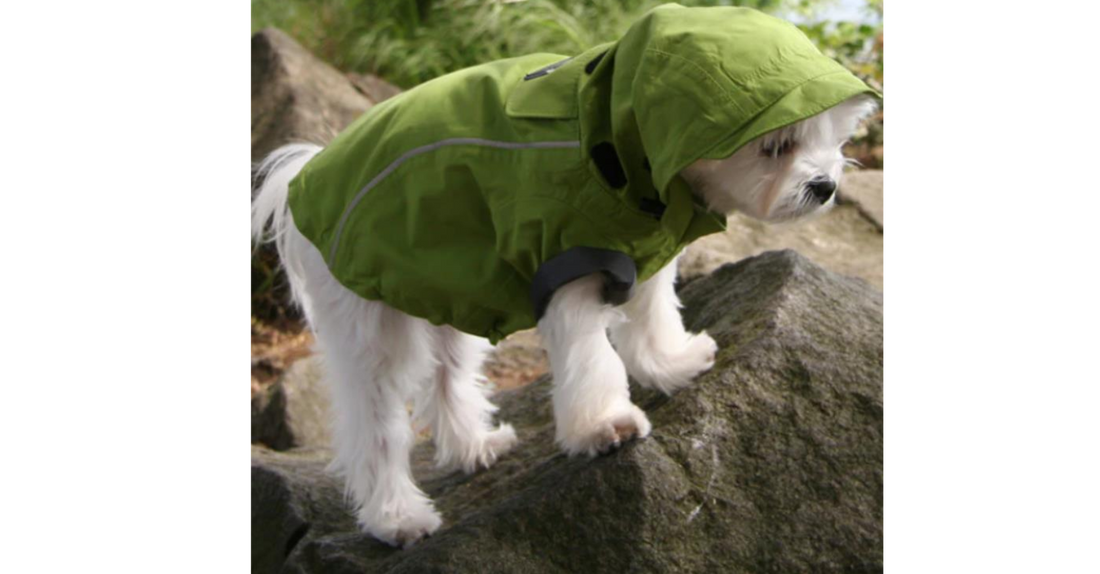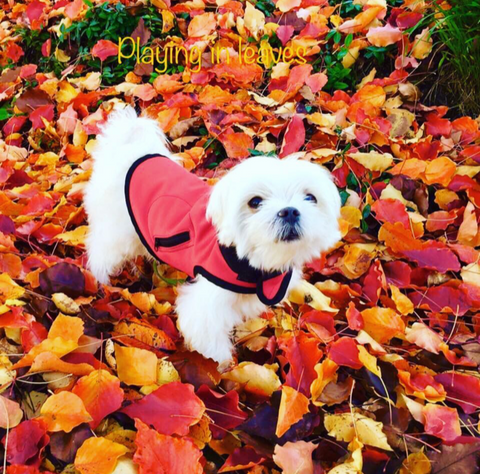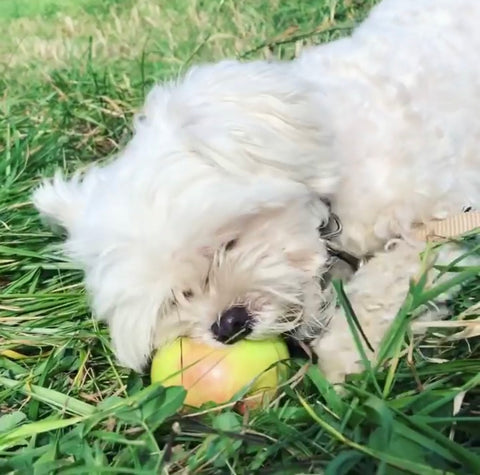
10 Fall Safety Tips For Dog Owners
Share
Fall is a beautiful season to get outside and enjoy the nature. The vibrant colors and cooler temperature create a perfect time to go on long walks or hikes with your dog, explore a new neighborhood. Whether you have a new puppy or a multi-dog household, keep these fall safety tips in mind the next time you and your furry friend head outside.
1. Dress Appropriate for Weather and use Reflective Wear
Autumn weather can change very quickly. For instance, it could be cool in the morning, warm up throughout the day, and then drop in temperature again or rainy in the early evening. Before going for a walk or hike check the weather and like you would plan the appropriate apparels for yourself consider pick the appropriate clothes for your furry friend such as Rain Jacket, body temperature regulator fleece jackets which is beneficial for temperature changes. Some breeds such as Husky and German Shepard have thick double coats and don’t need clothing but dogs with short fur or hair such as Maltese, Frenchie and Pit Bulls need proper clothing to keep them comfortable.
As the days get shorter, it only makes sense to plan for walks in the dark. Invest in reflective apparels and accessories for yourself and your dog.
2. Bring Drinking Water
Hydration is important for your best friend. Whether you are hiking in cooler weather or outside on a dog walk in the sun, it’s important to maintain proper hydration for your pet. Additionally, be mindful of your pup stopping and drinking out of puddles. For example, “puddles have germs and are an easy way to contract diseases. Consider keeping freshwater and collapsible cup with you at all times.
3. Stay Safe on the Trails

Camping and hiking are wonderful ways for the family to get out and bond together in nature. Humans and pets alike should consider how far they intend on hiking and plan accordingly. For example, always include a pet first aid kit in your pack. Further, a harness and leash are essential for exploring on the trails. You never know what unexpected situations might pop up, and its best to be prepared.
4. Beware of Ticks and other Potential Hazards

It’s absolutely beautiful when the leaves change colors. But, beware of ticks and other potential pet hazards that can lurk in the greenery such as, ticks, spiders, and snakes can be among the foliage, even under the leaves.. Many species of ticks can survive well into winter. Exercise caution when playing in fallen leaves, as these blood-sucking pests thrive in damp environments Always check your dog thoroughly after returning from the outdoors.
5. Be Careful Around Mushrooms
In some regions of the country, fall is just as wet as spring. That means that more mushrooms dot backyards and forest floors. While most mushrooms are perfectly safe, there’s a small percentage that are highly toxic to our furry friends (and to us!). Check out this handy guide from the ASPCA to stay informed about toxic mushrooms, and if you think your pet has gobbled up a toxic mushroom, contact the ASCPA Animal Poison Control Center immediately!
6. Watch Out for Wildlife
It’s almost hibernation season! This means that wild animals – like skunks, bears, and snakes – are out and about, busily preparing for their winter snooze. If you and your dog find yourself in the woods, keep a close eye out for these creatures, and mind your distance! If you live in an area that’s home to venomous snakes, consider keeping your dog on-leash until the snow falls.
7. Consider Their Joints
It’s typical for aging dog with arthritis or other joint problems to experience more discomfort once the temperature drops. Keep an eye out for signs such as limping and reluctance to exercise. If your dog is whimpering when he moves, it’s time to seek help from your veterinarian and consider joint supplements.
8. Avoid Allergy Aggravates
Fall allergens like ragweed and mold can cause your pet to itch, sneeze and cough all season long. The first step is avoidance – but this isn’t always possible, especially if you don’t know exactly what’s causing your dog’s allergic reactions. If you suspect he has seasonal allergies, talk to your veterinarian about getting him tested to determine the best natural treatment plan.
9. Be Considerate of Their Nutritional Needs
Chances are, your dog will be livelier now that the air is fresh. Take his activity level into account when reassessing his diet for the season – does he need more calories to account for the energy he’s expending?
10. Dog-proof your Environment

Do a daily sweep of your yard to ensure it’s safe for your pup. Clean up rotten fruit that’s fallen off trees. It may not seem like much, but fallen fruit, with its pits and seeds, can prove harmful to pets.
Apple seeds have only a tiny amount of cyanide in them, but ingest enough of them and the poison’s cumulative effects can become fatal. Larger seeds and stone fruit can pose a choking hazard, so keep that rake handy if you’ve got healthy trees around.
Apart from the more common fruit trees, black walnut, holly, cherry, and horse chestnut trees can be poisonous to animals if they ingest dropped seeds. Symptoms can manifest as anything from a stomach ache, vomiting, diarrhea, or even nervous system issues.
Break off any bare sticks that your pet can get caught on while playing – as they shed their leaves, they also pose more of a danger to your pet’s eyes.
Have a great time on the trails with your pet and let us know how it goes.
Do you have any tips to share?
Let us know in the comments below!
